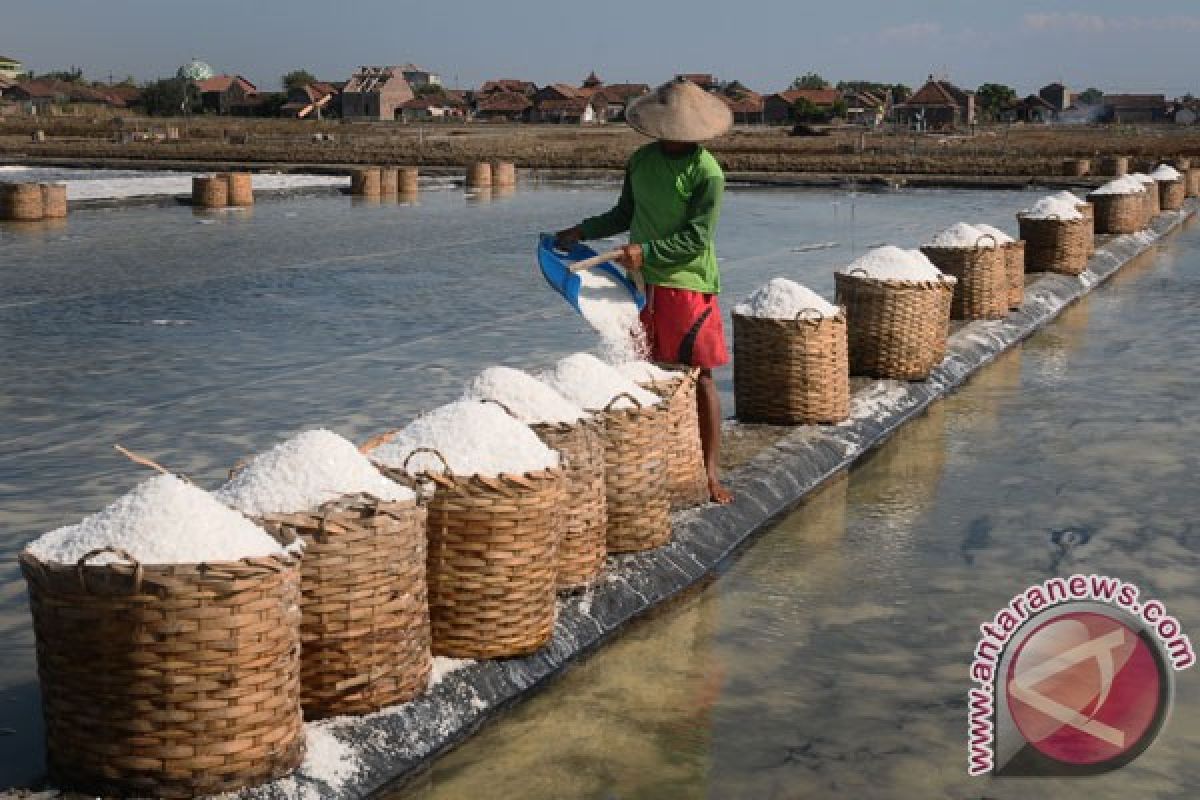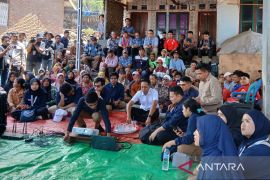Indonesia has the potential to produce and meet its domestic salt requirement, but due to weather anomalies, it has been lagging behind in domestic salt production; thus, it needs to import the commodity.
Although the country was earlier able to produce adequate salt to meet the domestic demand, its production last year was only some 144 thousand tons, much lower than its target of three million tons. The domestic salt requirement currently reaches 4.4 million tons per annum.
Hence, the government is encouraging to increase production and adopt a salt-processing technology.
"The Ministry of Maritime Affairs and Fisheries (KKP) should adopt a salt-processing technology that is adaptive to climate change and requires substantial investment," Subhan Usman, a researcher with Destructive Fishing Watch, stated in Jakarta on Friday.
According to Usman, the KKP has intensively worked to increase the nations salt production. Moreover, the government has set a target to realize self-sufficiency by 2020. Coordinating Minister for Maritime Affairs Luhut Binsar Pandjaitan wants the target to be moved forward and accelerated to be realized by 2019.
Usman noted that improving the quality and increasing the production of salt is a challenge for the government. This is due to the fact that the challenge of increasing salt production lies in technology and land constraints, Usman added.
The weather phenomenon has been blamed for the failure in realizing the salt production target last year. The El Nina was blamed for the failure, as it allegedly caused heavy downpour even during the dry season.
Heavy rainfall hampered the process of production in the salt producing areas, such as Madura, the countrys main producer of industrial and consumption salt.
Several parts of the country have been hit by flooding and landslides triggered by heavy downpour this year, including in the middle of the year, when it is generally dry.
In order to increase production, the Agency for Assessment and Application of Technology already has the technology to increase and improve the production and quality of salt.
The government is optimistic that the technology would be applied immediately.
The government and PT Garam will prepare and implement the program to improve salt productivity. A total of 22 thousand hectares of salt pans could be used to modernize the salt farming industry.
Meanwhile, Secretary General of the Peoples Coalition for Fisheries Justice (Kiara) Susan Herawati remarked that improvements, synergy, and coordination between the relevant institutions were the key to realizing self-sufficiency.
"The KKP, Ministry of Trade, Ministry of Industry, state-owned salt company PT Garam, and Central Bureau of Statistics (BPS) are the five important institutions overseeing matters related to the commodity. They should immediately sit together and start bringing about improvements in matters related to salt in a bid to seek solutions to realizing self-sufficiency in the commodity," Herawati had stated in Jakarta, Thursday (Oct 12).
According to Herawati, chaos in the management of salt production requires serious attention, and various parties need to conduct a joint evaluation.
She explained that the problems faced by the nations salt farmers were due to the lack of facilities and infrastructure in salt ponds in various regions, among others.
The other issue is poor access to clean water and sanitation in salt ponds and the lack of low-cost technology for the production and processing of salt. Furthermore, another issue is the magnitude of the role of middlemen in the distribution and marketing chain of the commodity as well as the low price of salt, Herawati pointed out.
Hence, Kiara secretary general urged the government to increase production and cut imports. The government should list salt as its strategic commodity.
"Various institutions and ministries can really focus on increasing the production of salt as a strategic commodity," Herawati stated in a discussion held in Jakarta on Thursday.
The government had earlier issued an import permit to state-owned salt producer PT Garam to import 75 thousand tons of raw salt from Australia. The growth in salt production has remained stagnant for decades. Indonesia has been importing salt since the last two decades, though it was able to raise production during the 2012-2015 period.
"The highest salt imports were recorded at three million tons in 2016," she remarked.
Hence, the problem of salt should be addressed optimally, and it should be listed as a strategic commodity.
Virtually, 22 thousand hectares of land have the potential to produce salt and are spread across various areas in the country, mainly in East Nusa Tenggara (NTT), which alone has some 15 thousand hectares, as well as in Java, Madura, and Jeneponto in South Sulawesi.
Hence, PT Garam plans to expand its business by harvesting 10 thousand hectares of new salt pans in NTT in order to realize self-sufficiency in the commodity by 2019.
President Director of PT Garam Dolly Parlagutan noted in a written statement received by Antara on Monday (Aug 28) that the new semi-mechanical salt pans in NTT have been estimated to be harvested until 2020.
According to Parlagutan, the quality of salt produced in NTT is equivalent to that of imported salt, with a minimum sodium chloride content of 97 percent. Hence, it is expected to reduce salt imports by contributing about one million tons to the nations salt production.
Currently, PT Garam only produces 350 thousand to 400 thousand tons of salt from 5,340 hectares of fields in Madura Island using a community-base scheme.(*)
Reporter: Andi Abdussalam
Editor: Heru Purwanto
Copyright © ANTARA 2017












